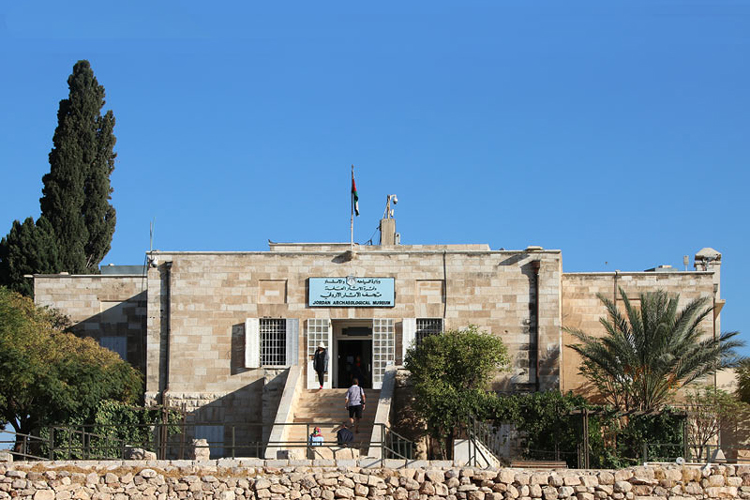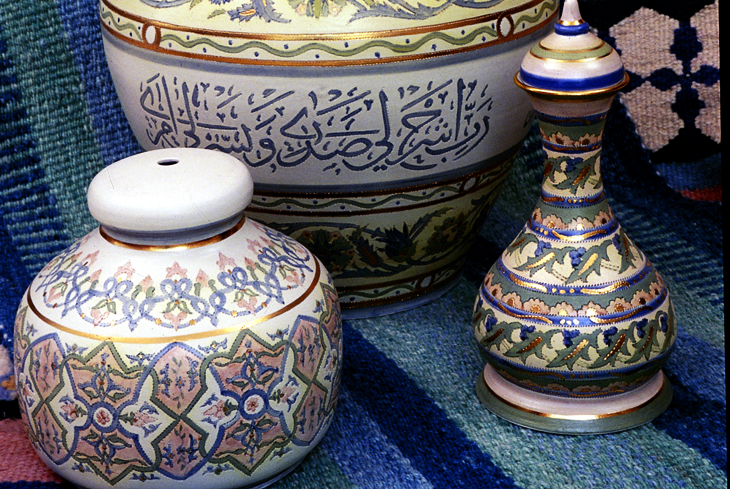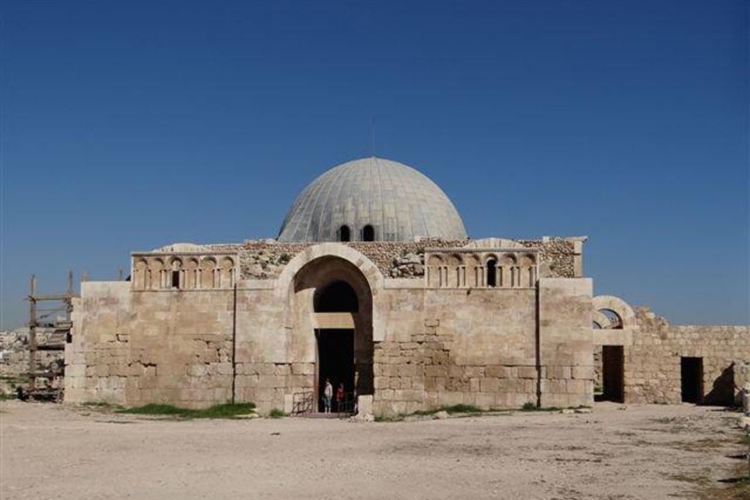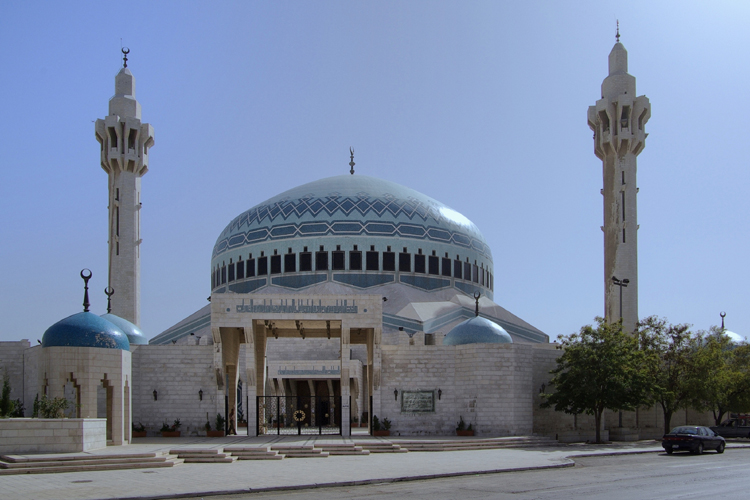


The Citadel | Roman Amphitheater







Overview
Itinerary
-
1
King Abd Alla Mosque
Pick-up from your Hotel and start your tour by the visit the King Abd Alla Mosque which was completed in 1989 as a memorial by the late King Hussein to his grandfather. The unmistakable blue-domed Mosque can house up to 7000 worshippers inside. This is the only Mosque in Amman that openly welcomes non-Muslim visitors
-
2
Amman Citadel
Then visit Amman Citadel located 132 meters above the level of the City Centre. South of the castle we can still see the ruins of Hercules temple, Umayyad palace, Byzantine Church and Jordan Archaeological Museum
-
3
a) Temple of Hercules
The Temple of Hercules is the most famous site within the Amman Citadel. The temple was built by the Romans and today only a few parts of the structure remain. Visitors flock to the citadel to see the glorious hand that is believed to be the hand of a large Roman statue of Hercules. This hand is all that remains of the statue and is a symbol of the Roman hero’s strength. Other remains of the temple include two complete pillars along with the ruins of four other pillars. The two complete pillars are 30feet high and it is believed that the temple would have reached 13 meters in height. The inscription close to the temple dates it to around 160 CE
-
4
b) The Umayyad Palace
The buildings that formed part of the Umayyad Palace are the best-preserved structure at the Amman Citadel. It is believed to have been built between the 7th and 8th Century. The palace originally covered a large complex of buildings, but most of it was destroyed by an earthquake. The domed audience hall is still in a good condition and its grand design was used to impress visitors to the palace. Within the Umayyad complex is a courtyard containing the ruins of residential buildings and the Cistern which was used to transport water to the palace
-
5
c) Byzantine Church
Within the citadel are the ruins of a 6th Century Byzantine church. All that remains of the church today are pillars, the floor plan, and some mosaics
-
6
d) Jordan Archaeological Museum
Then take a walk in Amman's downtown markets and City center before heading to the Archaeological Museum , located at the Amman Citadel complex and has a collection of artifacts from the Paleaolithic Period onwards. Four exhibits claim special interest. First are the two wax-like figures discovered at Ain Ghazzal in 1983, which date back to the early Neolithic period (8000-6000 BC). The second, and perhaps most famous exhibit, is the collection of The Dead Sea Scrolls, which are contained in a small alcove at the right end of the museum. An alcove on the opposite side of the room holds four anthropomorphic coffins, discovered in the grounds of the Raghadan Palace, which are rare examples of burials practised between the 13th and 7th centuries BC. Just across from the coffins is the ‘Amman Daedalus’, a Roman copy of the Hellenistic original. (According to Greek mythology, Daedalus built the famous Minoan Labyrinth in Crete. He is also known for making wings to enable him and his son Icarus, to escape the island)
-
7
The Roman Amphitheater
The adventure continues then with exploring the Roman Amphitheater The restored Roman Theatre, which dates back to the 2nd century AD. Built into three sides of the hillside, it seats around 6000 people and is still used for performances today The Roman Forum. A public square, bordered by the theatre and the Odeon, which was amongst the largest of the Empire (100 x50 metres). The row of columns in front of the theatre is what remains of the colonnades which flanked it The Nymphaeum. Roman cities always contained ornamental gardens, and old ‘Philadelphia’ was no exception. The main fountain is close to the theatre complex and dates back to the end of the 2nd century AD, Back to your Hotel in Amman
Price Per Person
| 1 Person(s) | Up to 1 Person(s) | € 122 |
| 2 Person(s) | Up to 6 Person(s) | € 65 |
The Price Includes
- Amman Hotel Pick-up and drop-off
- All transfers by a private air-conditioned vehicle
- Local English speaking driver
- Local Historical Guide throughout the tour
- A Bottle of water on board of the vehicle
- Entrance fees to mentioned sites
- Service charge and taxes
The Price does not Include
- Extras and personal expenses
- Meals
- Beverage
- Tipping
Les Tarifs Enfant
- Child up to 2 years old totally free of charge
- Child between 2 and 5.99 years old pay 50% of adult rate
- Child between 6 and 11.99 years old pay 75% of adult rate
- Child 12+ years old is considered as adult person and pay same rate
- If your sightseeing tours include domestic flights or/and ferry boat ticket, an extra supplement for your child may apply
Encore Plus de Choix

Aqaba Citytour
Half-Daytour
Visit Aqaba City and enjoy its highlights like the Fortress, Aqaba Museum, and the Aquarium at the Marine Science Station Complex
A Partir de € 40 / Personne Afficher les Détails
The Kings Way
Madaba | Mt Nebo | Dead Sea | Full-Daytour
Explore Jordan Holy Sights, Madaba, the City of Mosaics, Mount Nebo where Moses is thought to be buried and float on the surface of the Dead Sea
A Partir de € 94 / Personne Afficher les Détails
Wadi Rum
Half-Daytour
Wadi Rum, where are the most impressing desert landscapes in the World, explore the adventure of the protected area of Wadi Rum, described by Lawrence of Arabia as "vast, resounding and divine ”
A Partir de € 155 / Personne Afficher les Détails
Jerash | Ajlun | Umm Qais
Full-Daytour
A Rich Cultural day tour, Jerash, Ajloun and Umm Qais out of Amman in the north. Jerash the Old Roman City, Ajlun the Citadel of Saladin and Umm Qais the city of Alexander the Great
A Partir de € 117 / Personne Afficher les Détails
Petra
Full-Daytour
Enjoy an exciting tour from Aqaba City to Petra and Discover Petra which is one of the new seven wonders of the world. See the Treasury, Roman Theater, Royal Tombs and more. Lunch at Local Restaurant
A Partir de € 200 / Personne Afficher les Détails